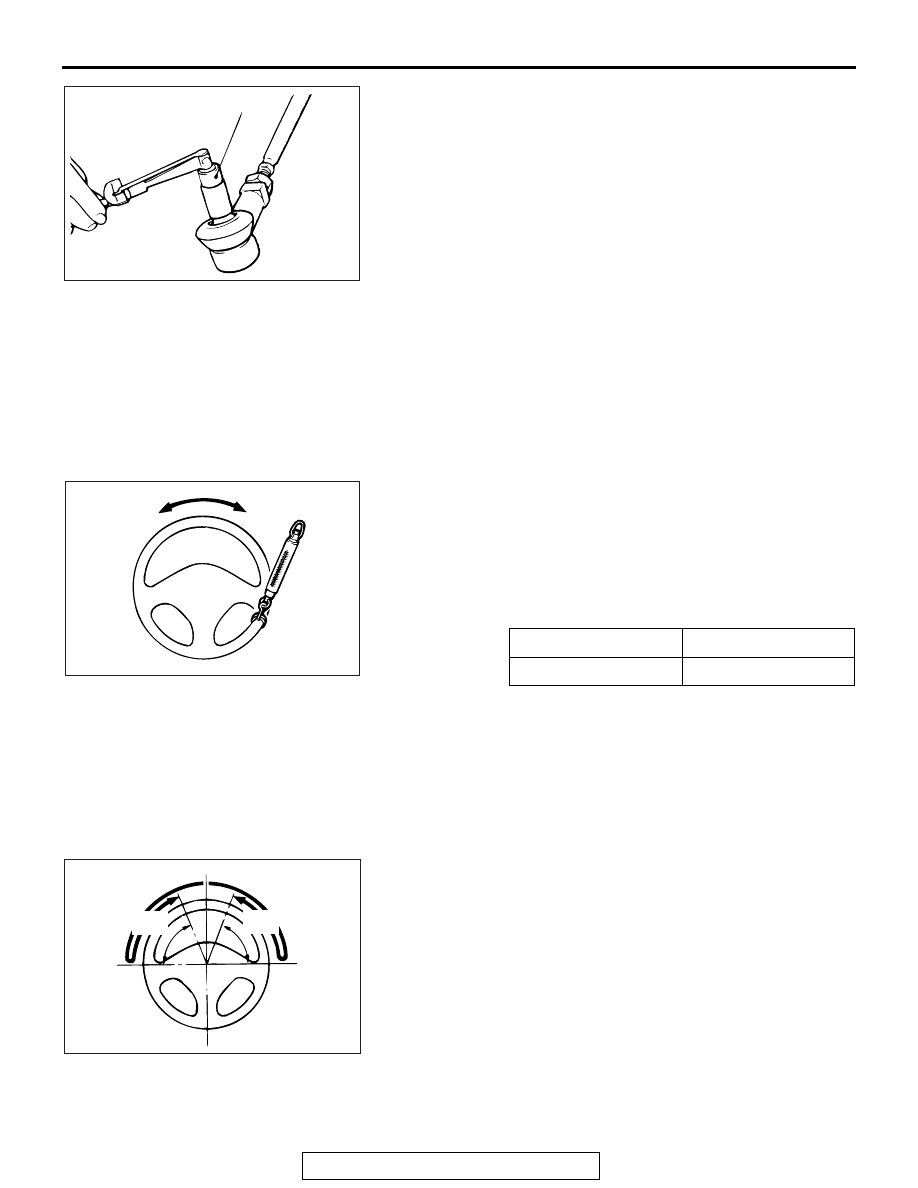Content .. 1563 1564 1565 1566 ..
Mitsubishi Outlander GS45X. Manual - part 1565

ON-VEHICLE SERVICE
TSB Revision
POWER STEERING
37-23
4. Move the ball joint stud several times and install the nut on
the stud. Using the special tool ball joint removal MB990326,
measure the ball joint breakaway torque.
Standard value: 2.9 N
⋅m (26 in-lb) or less
5. If the rotation torque exceeds the standard value, replace
the tie rod end. (Refer to
6. If the rotation torque is under the standard value, check the
ball joint for end play or ratcheting. If no end play or
ratcheting, the ball joint can be re-used.
7. Install the tie rod end to the knuckle, then tighten a new
self-locking nut to the specified torque.
Tightening torque: 25
± 5 N⋅m (18 ± 3 ft-lb)
STATIONARY STEERING EFFORT CHECK
M1372001701001
1. Park the vehicle on a level paved road, position the steering
wheel in the straight ahead direction.
2. Start the engine, and maintain the engine speed at 650
±
100 r/min <2.4L>, 600
± 100 r/min <3.0L>.
3. Position the spring scale on the circumference of the
steering wheel, and measure the steering force at the time
when the steering wheel is turned to right or left side (within
the range of one and a half turns) from the center position.
At the same time, verify that the steering force does not
vary excessively in both directions.
Standard value:
4. If not within the standard value, check and adjust the
suspected components.
STEERING WHEEL RETURN TO CENTER CHECK
M1372001800801
Conduct a road test:
1. Make both gradual and sudden turns and check the steering
wheel return.
2. At a vehicle speed of approximately 22 mph (35 km/h), turn
the steering wheel 90 degrees, hold a few seconds, then
release. If the steering wheel then returns 70 degrees or
more, the return can be judged satisfactory.
NOTE: There will be a momentary feeling or "heaviness"
when the wheel is turned quickly, but this is not abnormal.
(Oil pump discharge amount is especially apt to be insuffi-
cient during idling.)
ACX01129 AB
MB990326
Steering force
29 (6.5 lb) N or less
Fluctuation band
5.9 (1.33 lb) N or less
AC000987
AC000989AC
70˚ or
more
70˚ or
more